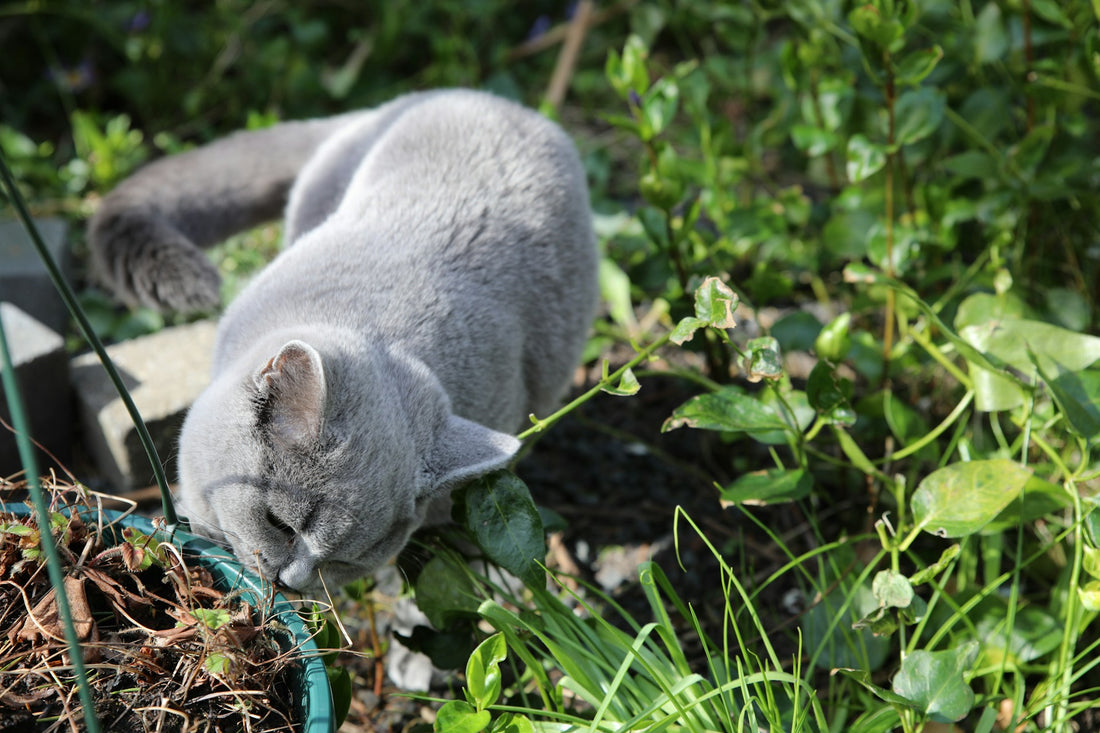Many people think cats and gardens don't mix. Felines have been known to occasionally unearth recently planted bulbs, eat plants, and hunt birds and butterflies in the garden. However, the benefits of having cats in your garden can't be ignored. And, if you set it up well, hopefully, they won't bother any other parts of the garden.
Benefits Of Including Your Cats In The Garden Plan
Cats are great at keeping troublemaking voles, mice, rats, and chipmunks out of the garden. Give your cat a badge and make them part of the Integrated Pest Management crew!
Why Dedicate An Area Of The Garden For Cats?
Providing cats with a dedicated garden area that includes catnip, a water bowl, and a cozy sleeping spot can prevent them from roaming into flower beds and vegetable gardens. Cats prefer spending time in the catnip, playing in the soil, and napping under the sun's warmth. This allows them to be content in their own designated space.
Where Is The Best Location For A Cat Garden?
The most crucial factor for cats is the location of their garden. They enjoy basking in the sun, so placing their garden in an area with full sun exposure is best. Include a bowl of water and a cozy spot for them to rest, like a bench or patio swing, and they'll be happy cats. It's best to position their garden in a secluded corner of the yard, away from your prized plants and flowers.
Which Plants Are Best For Cats?
Among the most common and effortless options are catnip (Nepeta cataria), catmint (Nepeta mussinii), valerian, and various types of cat grass.
Consider growing cat-friendly grasses or leaving a small section of unmowed grass (approximately 3 square feet) for your furry friends to enjoy. They will appreciate both the tasty treat and the hiding spot it provides.
Is Catnip Hard To Grow?
Both catnip and catmint thrive in full or partial sunlight and require well-drained soil. These plants are not attractive to deer, which is great also. Catnip typically reaches a height of one foot and blooms with delicate purple flowers during the summer months.
Catmints can grow as tall as three feet and boast small white or lilac flowers in the summertime. The fragrant scent of these plants makes them a lovely addition to any summer garden, and they are known to attract beautiful butterflies. Catnip also has the added benefit of deterring rats.
Do All Cats Enjoy Catnip?
Around eighty-five percent of pet felines react chemically to catnip, particularly to the essential oil in catnip and catmint known as nepetalactone. This compound triggers harmless physical reactions, including sexual responses in both male and female cats, making it widely believed to be an aphrodisiac.
However, the remaining fifteen percent of cats do not respond to nepetalactone, as they did not inherit the gene responsible for the catnip response from their mother. Additionally, it is rare for young kittens to respond to catnip, regardless of their genetic makeup.
Advantages For The Cats
Cats have an inherent desire for grass because it offers beneficial roughage and a high amount of vitamins, particularly folic acid. Consuming grass can help with a cat's digestion and eliminating hairballs.
If you have cats that stay indoors, make sure to cultivate specialized cat grass for them. This will prevent them from eating your household plants. Additionally, plant catnip for them outside and offer them a new stem every few days. This will give them the same exhilarating sensation as if they were playing in it outside.
What Plants Are Bad For Cats?
Some plants are toxic to cats; these, of course, should be avoided. These plants include azaleas, chrysanthemums, daffodils, hydrangeas, iris, ivy, lantana, marigolds, and wisteria. Tiger lilies are especially dangerous for cats and can result in fatality.
How Do I Keep Cats Out Of My Garden
If you have areas of the garden you would like to keep the cats away from; there are ways to deter them. One effective method is to apply a mixture of vinegar and water near the foundation of your acid-loving plants or to place lemon and orange peels around the perimeter of your plants to prevent cats from approaching.
Another option is to incorporate pebbles, gravel, or small, upright twigs among your plants to discourage cats from stepping on them with their delicate paws. Also, certain plants such as scented geraniums, mosquito plants, and citronella can also act as repellents for cats.
One of the top options available is a coleus known as "Scaredy Cat" (Coleus canina). Although it may be a bit expensive, its powerful scent, which is activated by touch or sunlight, effectively deters cats and dogs. This plant can be placed in a pot and relocated to various parts of the garden, providing protection from animals in different areas. And it produces clusters of blue flowers that emit the same intense aroma.



